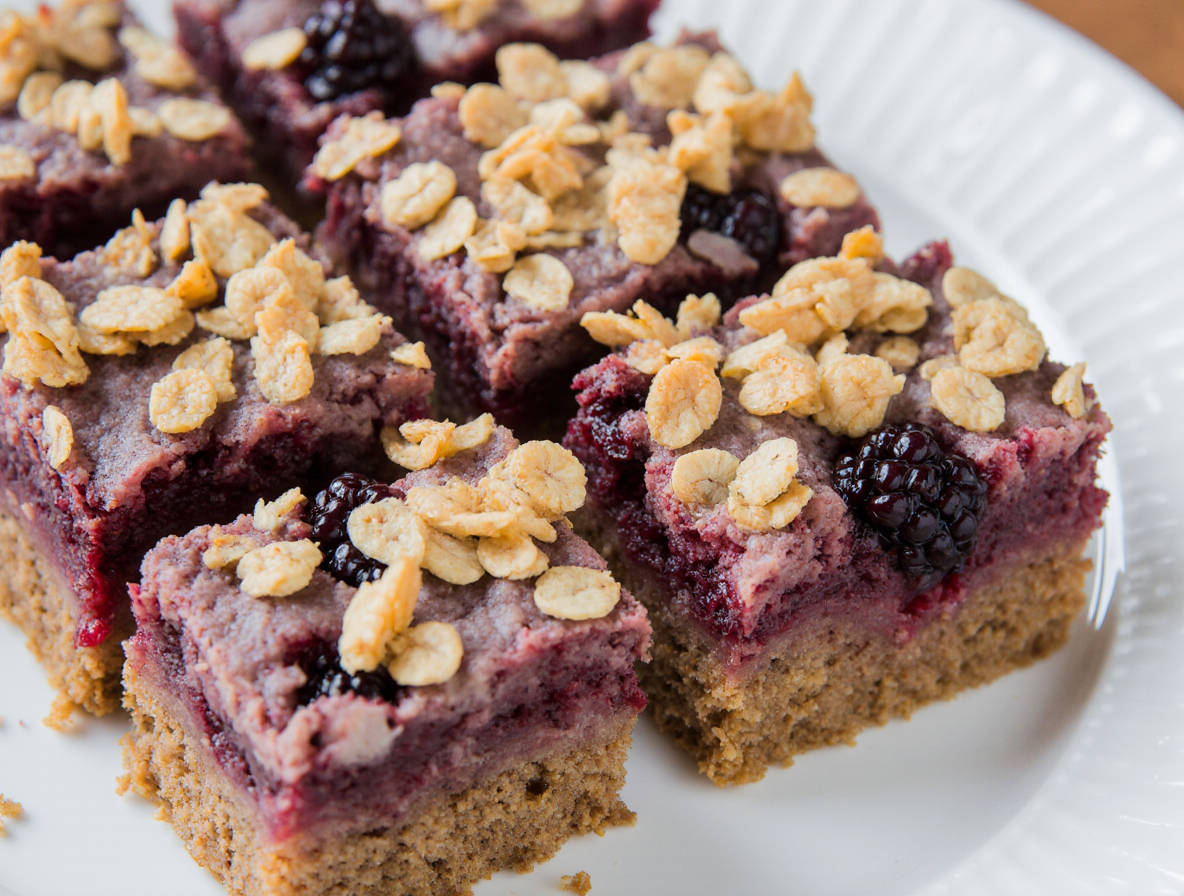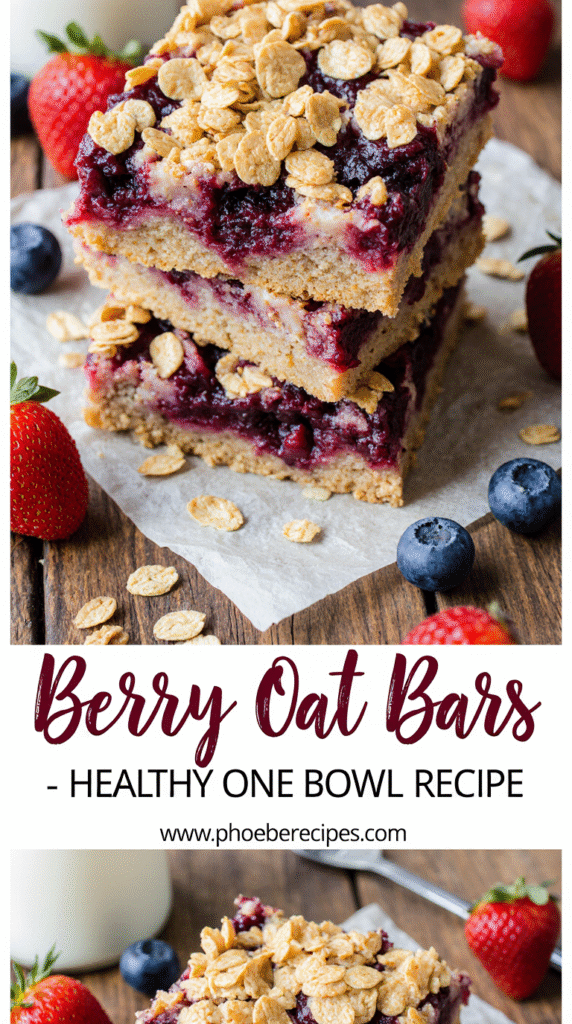How to Make Baked Oatmeal Bars: One Bowl Recipe That Never Fails
Looking for a baked oatmeal bars recipe that’s both delicious and nutritious? Surprisingly, these wholesome treats clock in at approximately 100 calories each, making them a perfect guilt-free option for any time of day.
These healthy baked oatmeal bars are one of my favorite ways to serve up plenty of nutrients in an easy-to-eat format. What’s even better? The entire recipe comes together in just 5 minutes! Additionally, they contain whole grains, healthy fats, produce, and protein, making them an excellent choice for both breakfast and snacks.
I love how baked oatmeal breakfast bars perfectly balance the line between nutritious meal and satisfying treat. They’re also incredibly versatile – easily customizable and great for both kids and adults. Whether you’re meal prepping for the week ahead or looking for a convenient on-the-go option, this one-bowl recipe never disappoints.
Gather Your Ingredients
The foundation of successful baked oatmeal bars begins with selecting the right ingredients. Let me walk you through everything you’ll need to create these delicious treats from your pantry staples.
Oats, flour, and sweeteners
Old-fashioned rolled oats form the heart of any baked oatmeal bars recipe. I strongly recommend using these over quick oats, as they provide a chewier, heartier texture that holds together beautifully when baked. Steel-cut oats won’t work well here since they require longer cooking times, while quick oats often result in a drier final product.
For flour options, you can use all-purpose flour or make your bars gluten-free by substituting 1:1 gluten-free flour. Another excellent option is oat flour, which you can easily make at home by processing rolled oats in a food processor until fine.
When it comes to sweetening your bars, natural options work best. Brown sugar provides moisture and a chewy texture, while pure maple syrup (not pancake syrup) or honey offer natural sweetness and help bind ingredients together. Ripe bananas serve double duty – they add natural sweetness while improving the bars’ soft texture.
Choosing the right berries
Both fresh and frozen berries work wonderfully in baked oatmeal bars, though fresh varieties typically release less liquid during baking. Popular choices include blueberries, strawberries, raspberries, and blackberries – you can use a single type or create a delightful berry medley.
If using frozen berries, you generally don’t need to thaw them first, although some bakers prefer thawing to prevent excess moisture. Frozen fruit retains similar nutritional value to fresh, since it’s harvested at peak ripeness and flash-frozen, preserving nutrient content.
Optional add-ins for flavor and texture
The versatility of baked oatmeal bars truly shines through custom add-ins:
- Nuts and seeds: Sliced almonds, chopped walnuts, pecans, or pumpkin seeds add protein and satisfying crunch
- Spices: Cinnamon is a classic choice, but nutmeg, vanilla extract, or pumpkin pie spice can elevate flavor profiles
- Healthy boosts: Ground flaxseed, chia seeds, or a spoonful of nut butter incorporate extra nutrition
- Sweet touches: Mini chocolate chips, coconut flakes, or dried fruits like cranberries and raisins add delightful sweetness
Remember that when adding nuts and seeds, moderation is key – too many can alter your bars’ consistency. For protein-rich bars, consider incorporating a tablespoon of nut butter or a sprinkle of hemp seeds.
For my own perfect batch, I typically use certified gluten-free rolled oats, a touch of maple syrup, fresh mixed berries, and a handful of sliced almonds. However, the beauty of this one-bowl recipe lies in making it your own with whatever ingredients you have on hand.
Mix and Bake in One Bowl
The beauty of this baked oatmeal bars recipe lies in its simplicity. Once you’ve gathered all your ingredients, the entire process requires just one bowl and minimal cleanup.
Combine dry and wet ingredients
Creating these wholesome treats follows two main approaches. For the first method, start by combining all dry ingredients (oats, baking powder, salt, and cinnamon) in a large bowl. Separately mix wet ingredients (eggs, milk, applesauce, and vanilla), then pour them over the dry mixture. Alternatively, begin with wet ingredients—mash banana until creamy, add milk, eggs, sweetener and extracts—before stirring in the oats and other dry ingredients.
For the best texture, let the combined mixture sit for about 20 minutes before baking. This resting period allows the flavors to meld together perfectly. Furthermore, this waiting time helps the oats absorb some liquid, creating a more cohesive batter.
Fold in berries without overmixing
After your batter has rested, gently fold in 1 cup of berries. The key word here is “gently”—overmixing can break the berries and turn your entire mixture purple or pink. For larger frozen berries, consider cutting them down to keep fruit pieces roughly the same size.
Reserved berries can be sprinkled on top of the batter after it’s transferred to your baking pan. This creates an attractive finished product with visible fruit throughout.
Bake time and temperature tips
Preheat your oven to 350°F (177°C). This moderate temperature allows the bars to cook through evenly without drying out. Pour your mixture into a prepared baking pan—either 8×8 or 9×9 inch square pans work perfectly.
Bake for 35-45 minutes, or until the edges appear golden brown and the center has almost set. For softer, moister bars, remove when the center still looks slightly wet. Conversely, for firmer, more portable bars, bake until the center has completely set. Allow to cool for 5 minutes before slicing to help the bars hold their shape.
Customize Your Baked Oatmeal Bars
One of the greatest advantages of homemade baked oatmeal bars is their incredible adaptability to various dietary needs and preferences.
Make it vegan or gluten-free
Creating vegan oatmeal bars is remarkably simple. Replace eggs with flax eggs (1 tablespoon ground flaxseed mixed with 3 tablespoons water) or chia eggs for binding. Swap honey for maple syrup or brown rice syrup to maintain that sticky consistency needed for proper binding. Choose plant-based milks like almond, coconut, or oat milk instead of dairy.
For gluten-free versions, use certified gluten-free rolled oats as regular oats may be processed in facilities that also handle wheat products. Notably, this simple switch makes your baked oatmeal bars suitable for those with celiac disease or gluten sensitivity.
Use fresh or frozen fruit
Both fresh and frozen fruits work excellently in baked oatmeal bars. Fresh fruits typically provide better structure and texture, especially for recipes that aren’t baked long. Frozen fruits, primarily harvested at peak ripeness, offer year-round convenience.
When using frozen berries, keep in mind they release more liquid during baking. To combat potential sogginess, add an extra 1/4 teaspoon of thickener (like cornstarch) per cup of fruit. Rinsing frozen berries in cold water prevents their colors from bleeding throughout your bars.
Add protein or healthy fats
Boost nutrition by incorporating protein powder (about 1/4 cup), along with an extra 2 tablespoons of milk to prevent dryness. Greek yogurt adds substantial protein—some brands offering up to 18 grams per 3/4 cup serving.
For healthy fats, fold in nut butters like almond, peanut, or sunflower seed butter (for nut-free versions). Seeds such as hemp, chia, or flax not only add protein but also beneficial omega fatty acids. Chopped nuts—walnuts, pecans, or almonds—provide satisfying texture alongside nutritional benefits.
Store, Freeze, and Reheat
Properly storing your baked oatmeal bars extends their shelf life, maintaining both flavor and texture. I’ve discovered several effective methods for keeping these treats fresh.
How to store for short-term use
For daily enjoyment, store completely cooled bars in an airtight container. At room temperature, they’ll remain fresh for approximately 1-4 days. Refrigeration extends this considerably—up to 5-7 days. Individually wrapping each bar prevents them from sticking together. Moreover, refrigerated bars maintain their structure better, making them ideal for on-the-go eating.
Freezing tips for long-term storage
For batch preparation, freezing works remarkably well. First, allow bars to cool completely. Subsequently, wrap individual portions in wax paper or plastic wrap before placing in freezer bags. Remove as much air as possible to prevent freezer burn. Properly frozen bars remain fresh for 3-6 months[181]. For best organization, clearly label packages with dates.
Best ways to reheat without drying out
When ready to enjoy, you have several reheating options:
- Microwave method: Place a bar in a microwave-safe dish with a splash of milk. Heat for 30-45 seconds at 30% power.
- Oven method: Warm at 350°F for 5-7 minutes.
- Stovetop option: For regular oatmeal, add 1-2 tablespoons of liquid and heat on low for 5-7 minutes.
Adding a bit of moisture during reheating prevents dryness, practically making them taste freshly baked.
Conclusion
Baked oatmeal bars truly stand out as a perfect solution for busy individuals seeking nutritious yet delicious food options. Throughout this article, we’ve explored how these versatile treats combine wholesome ingredients with incredible ease of preparation. Most importantly, these bars offer approximately 100 calories each while delivering essential nutrients from whole grains, healthy fats, and protein.
The one-bowl preparation method makes these bars accessible even for novice bakers. Additionally, the ability to customize ingredients allows you to adapt the recipe based on dietary restrictions or personal preferences. Whether you prefer vegan alternatives, gluten-free options, or want to experiment with different fruit combinations, these bars accommodate all your needs.
Storage flexibility further enhances the appeal of baked oatmeal bars. You can enjoy them immediately, refrigerate for up to a week, or freeze for several months. Therefore, they make an excellent option for meal prep enthusiasts who value both convenience and nutrition.
After trying countless breakfast recipes over the years, I can confidently say these baked oatmeal bars have become a staple in my kitchen. The perfect balance of nutrition and taste, coupled with their adaptability, makes them an unbeatable choice for breakfast or snacks. Give this foolproof recipe a try, and you’ll likely find yourself making batch after batch of these satisfying treats. Your mornings will never be the same again!
FAQs
Q1. How do I make baked oatmeal bars in one bowl? Combine dry ingredients (oats, flour, baking powder, salt, cinnamon) in a large bowl. Mix wet ingredients separately, then pour over the dry mixture. Let the batter rest for 20 minutes, gently fold in berries, and bake at 350°F (177°C) for 35-45 minutes.
Q2. What’s the best way to keep oatmeal bars from falling apart? Use a binding agent like honey, maple syrup, or mashed banana to help the ingredients stick together. Also, allow the bars to cool completely before cutting to help them maintain their shape.
Q3. Can I customize baked oatmeal bars for different dietary needs? Yes, you can easily adapt the recipe. For vegan bars, use flax eggs and plant-based milk. For gluten-free versions, use certified gluten-free oats. You can also add protein powder or nut butter for extra nutrition.
Q4. What are some tasty add-ins for oatmeal bars? Popular add-ins include nuts (almonds, walnuts, pecans), seeds (pumpkin, chia, flax), dried fruits (cranberries, raisins), fresh or frozen berries, and chocolate chips. Spices like cinnamon or vanilla extract can also enhance flavor.
Q5. How should I store baked oatmeal bars? For short-term storage, keep cooled bars in an airtight container at room temperature for 1-4 days or refrigerate for up to a week. For long-term storage, wrap individual bars and freeze for up to 6 months. Reheat in the microwave or oven when ready to eat.


